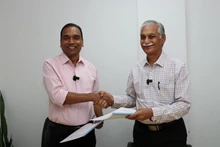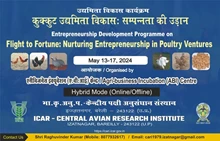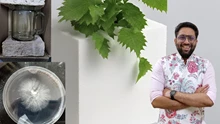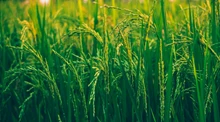
As the population of the world continues to increase at an alarming rate, traditional farmers are experiencing extreme difficulties cultivating the same products on the same land with the help of chemical fertilizers and pesticides.
To tackle the issue of environmental degradation, soil and water conservation, and food shortage, soilless farming techniques are gaining a lot of momentum.
The Indian Institute of Horticulture Research has recently come into the news for developing a new vertical farming structure as a solution for people looking to grow vegetables in small spaces. This structure will allow people with sunlit utility areas, balconies, and rooftops to not just grow vegetables but also grow medicinal and decorative plants. Called ‘cocoponics’ this system uses cocopeat as a growing medium.
The institute is even offering training to prospective learners in urban areas in an effort to provide consumers with clean, safe, and easily accessible fresh fruit and vegetables. They will even impart knowledge regarding pest and disease management, and the process of composting kitchen wastes for use in terrace gardens. Vegetables and fruits will be grown using Arka Fermented Cocopeat and IIHR’s standardized nutrient solution.
Other types of soilless farming techniques:
Drip System- The drip system is a soilless farming technique that grows plants in growing mediums like coco coir, peat moss, and rock wool. In this system, a pump that is set on a timer delivers a feeding solution to the base of each plant. The excess solution is then collected in a reservoir and pumped back into the plants. When this system works efficiently, it is low maintenance and delivers high output.
Hydroponics- Hydroponics refers to a soilless farming technique that uses a water-based, nutrient-rich solution as a growing medium for the pot. The root system is supported by an inert medium such as perlite, peat moss, vermiculite, and clay pellets. The purpose of the inert medium is to give the plants access to oxygen for proper growth. It is a suitable method for growing fresh vegetables and fruits in urban areas where there is less access to resources and where the arable land is polluted. Plus, studies indicate that this system of soilless farming has a 20 to 25% higher yield than traditional farming practices.
Nutrient Film Technique- The nutrient Film Technique is a soilless farming technique where the roots of the plants are submerged in a very shallow trough of water which is set up on a slight angle. The nutrient pump is connected to a timer which provides the plants with a feeding solution at regular intervals. The reservoir which collects the excess water and solution is also fitted with an air stone that pumps purifies the water, prevents stagnation, and maintains the optimal oxygen levels.
Aeroponics- In aeroponics, the roots of the plants are suspended in mid-air and the plants grow in a humid environment without soil. However, the roots of the plants are sprayed with water and a nutrient solution at regular intervals. This method reduces the usage of water and fertilizer. And no pesticides need to be used in this method because the plants are grown in a controlled environment.
Soilless farming is the need of the hour as it helps combat climate change, reduces water wastage and land pollution, efficiently uses fertilizers, and reverses the damage caused to plant species due to intensive farming practices and overexploitation. It also promises a better-quality product and a higher yield.










